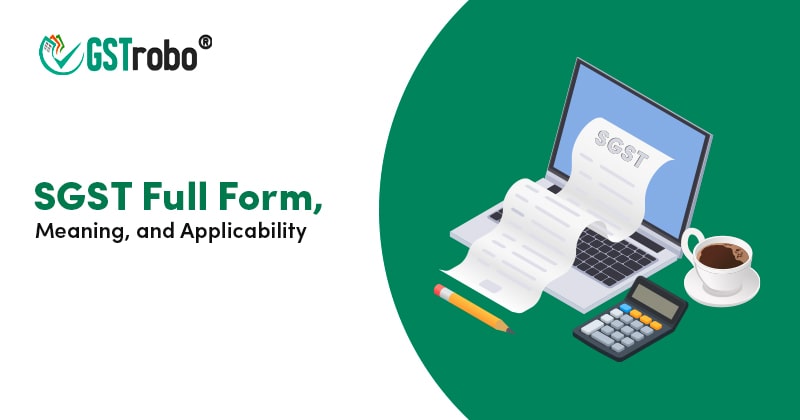SGST Full Form, Meaning, and Applicability
GST is a reformative taxation system implemented by the Government of India in the year 2017. GST was introduced with the motive of “One Nation One Tax.” CGST, SGST, and IGST are the three major tax components under GST.

And in this blog, we will have in-depth information related to SGST such as the full form, meaning, and applicability of SGST.
SGST Meaning
The full form of SGST is State Goods and Service Tax and it is governed by the State Goods and Services Tax (SGST) Act 2017. The revenue generated from SGST is collected by the state government. All state taxes, including the Value Added Tax, Entertainment Tax, Luxury Tax, and Entry Tax, got subsumed after the implementation of SGST. For example, if goods or/and services are sold within the State, SGST will be levied on such transactions.
SGST Applicability
To determine if the State Goods and Services Tax (SGST) applies to a taxable transaction, one must first determine whether the transaction is an intra-state or inter-state supply.
Intra-State supply of products or services occurs when the supplier’s location and the place of supply, i.e., the place of delivery of goods or consumption of services, are both in the same state. A seller must collect both CGST and SGST from the customer in a transaction involving supply within the state. State GST is deposited with the State Government, whereas the Central GST is deposited with the Central Government.
When the provider and the place of supply are in separate states, this is referred to as inter-state supply. The transaction is also presumed to be Inter-State when goods or services are exported or imported, or when products or services are supplied to or by an SEZ unit. A seller must collect IGST from the customer in a transaction involving supplies between two states or beyond the state.
Example to understand CGST, SGST, and IGST Applicability
A dealer in Delhi is selling a DSLR to an individual residing in New Delhi for INR. 1,00,000. This transaction will be subject to a 14% CGST and a 14% SGST. The dealer in Delhi will be required to charge INR 14,000 under CGST and INR 14,000 under SGST, with the appropriate sums being deposited in the Central and State Government accounts.
The dealer from Delhi (in this case) is now supplying this DSLR to another dealer in Bengaluru. Because this is an interstate transaction, the Delhi dealer will charge IGST of 28%, or INR 28,000, on the value of the DSLR (INR 1,00,000), and deposit the IGST payment into the government account.
Features of SGST
Here are some of the key elements of the SGST:
1. The SGST applies to all goods and services provided for consideration.
2. Each State Goods and Service Tax Department is governed by the SGST Act 2017. The core aspects of the GST legislation for all states, such as rates, valuation, taxable event, measure, categorization, and so on, will stay consistent throughout each state’s SGST department.
Difference between CGST and SGST
| Criteria of Differentiation | CGST | SGST |
| Full-Form | Central Goods and Services Tax | State Goods and Services Tax |
| Applicability | Intra-State | Intra-State |
| Levied By | Central Government | State Government |
| Collected By | Central Government | State Government |
| ITC Utilization | (i) CGST (ii) IGST | (i) SGST (ii) IGST |
| Composition scheme Applicability | Applicable | Applicable |
| Registration Criteria | A taxpayer whose aggregate turnover exceeds INR 40 Lakhs (INR 20 Lakhs in particular states) needs to obtain GST registration. | A taxpayer whose aggregate turnover exceeds INR 40 Lakhs (INR 20 Lakhs in particular states) needs to obtain GST registration. |
